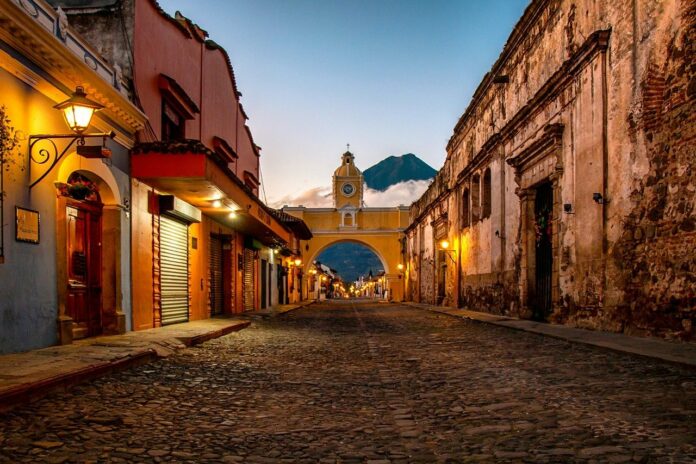Located in Central America, Guatemala is a country of beautiful landscapes but not the most prosperous conditions. It’s a land of contrasts—lush, forested mountains and impenetrable jungles on one side, and grim slums on the other.
The rare pockets of affluent living are often heavily fortified with barbed wire and high fences. While Guatemala is home to many good people, one must remain vigilant as the crime rate is high, making the environment less than tranquil.
Facts About Guatemala:
- Name Origin: The name “Guatemala” comes from the Aztec language, one of the local indigenous tongues, and translates to “place of many trees.”
- Population: The population of the entire country is roughly equivalent to that of Moscow.
- Capital: The capital city, also named Guatemala, is the largest in Central America and was founded centuries ago.
- Safety Concerns: Guatemala ranks among the least safe countries in Latin America, alongside El Salvador, Nicaragua, and Honduras.
- Colonial History: In the early 16th century, the territories of modern-day Guatemala were conquered by the Spanish, who subdued the Maya and established a colony.
- Two Oceans: The country is bordered by two oceans—the Pacific and the Atlantic.
- Crocodile Habitat: Guatemalan rivers are home to caimans, dangerous predators that the local population still hunts for food despite the difficulty of capturing them.
- Seismic Activity: Guatemala is dotted with active volcanoes and frequently experiences earthquakes. In 1976, an earthquake destroyed about 90% of the capital and several other cities, resulting in significant casualties and leaving around a million people homeless.
- Agricultural Workforce: Nearly half of the Guatemalan population is involved in agriculture.
- Coffee Production: Guatemala consistently ranks among the top 10 coffee-producing countries globally.
- Mayan Population: The Maya make up about one-third of the population, or roughly two million people. Nearly 3% of the population are Americans, primarily businesspeople and corporate employees.
- Literacy Rate: Only about 70% of the Guatemalan population is literate.
- Territorial Dispute: A territorial dispute between Guatemala and neighboring Belize has persisted for over 150 years, with no resolution in sight.
- Civil War: Guatemala endured a 36-year civil war, from 1960 to 1996, and the aftermath is still felt today.
- 2010 Sinkhole: In 2010, a powerful hurricane struck the capital, leading to the sudden formation of a massive sinkhole in the city center. The sinkhole was about 30 meters in diameter and 20 meters deep, swallowing a three-story building.
- Work Hours: According to statistics, Guatemalan women spend more time working than women in any other country.
- Highest Point: The country is home to the highest point in Central America, the summit of the Tajumulco Volcano.
- Petén Nature Reserve: The Petén Nature Reserve in Guatemala is the second-largest tropical rainforest on Earth.
- National Instrument: The national musical instrument of Guatemala is the marimba, a complex instrument requiring 6 to 12 players depending on the specific piece.
- Lake Izabal: Guatemala’s largest lake, Izabal, is notable for the unique hot water waterfall in its vicinity.
- San Carlos University: The University of San Carlos in Guatemala City is the largest in Central America and the fourth largest in the Western Hemisphere.
- Instant Coffee Invention: Instant coffee was invented in Guatemala in 1910.
- Starbucks Coffee: The coffee beans served at Starbucks locations worldwide are grown in Guatemala.
- Volcanoes: Guatemala is home to 33 volcanoes, 4 of which are active.
- Pine Trees: The country has more species of coniferous trees used in industry than any other country in the world.
- Antigua Guatemala: The former capital, Antigua Guatemala, is now essentially a living museum.
- Four Active Volcanoes: Guatemala is the only country in Latin America with 4 active volcanoes.
- Street Numbering: In the capital city, streets are numbered rather than named.
- Currency: The Guatemalan currency, the quetzal, is named after a bird revered by the Maya and Aztecs. The quetzal also appears on the country’s flag.
- Ceiba Tree: The Guatemalan forests are home to the unique ceiba tree, which can grow up to 50 meters tall. The tree is celebrated with various festivals, especially in rural areas.
- Filming Location: Guatemala is one of the world’s most popular locations for shooting movies and music videos.
- National Flower: In 1934, Guatemala officially designated the orchid Lycaste virginalis, known locally as the “white nun,” as its national flower.
- Sugar Cane Production: Guatemala ranks second in the world for sugar cane production and fifth for sugar exports.
